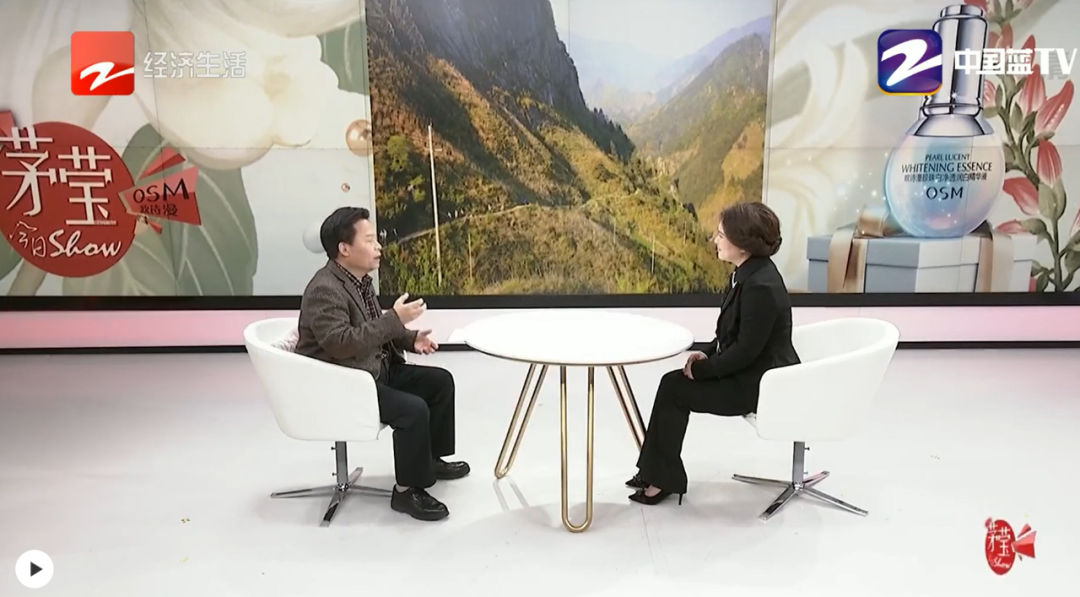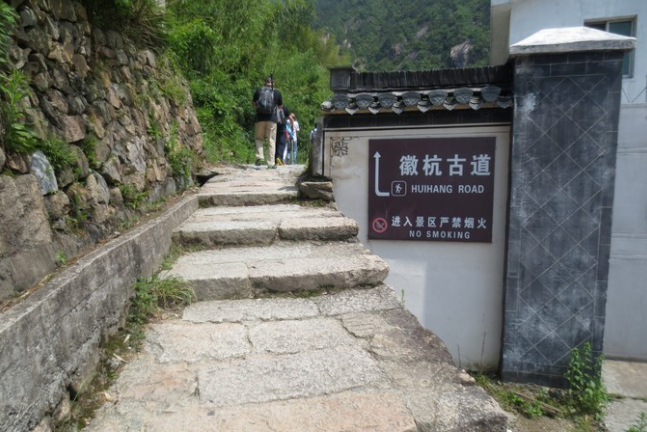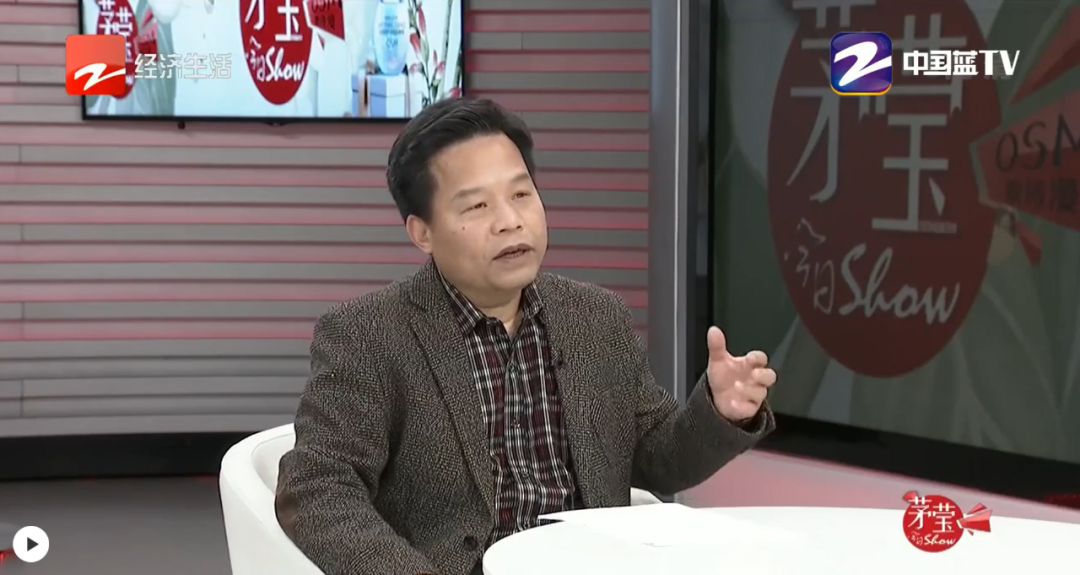With vernal wind blows and everything comes back to life, spring is a good season for travelling and getting close to nature.
Speaking of ancient roads, what comes to our mind may be the fragmented flag paving, the toilsome journey, and the beautiful scenery along the way. In fact, as valuable historical and cultural heritage, there are many more reasons why ancient roads are worth exploring.

Recently, ZHOU Lingqiang, Professor from the School of Management at Zhejiang University, was invited to the Today Show Starring MAO Ying of Zhejiang Television Station to discuss about ancient roads protection.
(The following contents are selected from the Today Show on March 3, 2022)
Q1
What kind of road is considered as an ancient road? What are the standards?
ZHOU Lingqiang: Just as LU Xun said, path is shown up only when thousands of people walk through. First of all, an ancient road must be historic. Generally speaking, ancient roads should have played an important role in economic and social development in the past. Lets take the Ancient Tea Horse Road as an example. In ancient times, tea was produced in the south, while people in the north like to eat meat. After enjoying those high protein beef and mutton, they must drink tea to balance these nutritional ingredients. Therefore, in the past, some people sold tea from the south to the north, which endowed the Ancient Tea Horse Road with economic function.
Secondly, an ancient road must have a long history, at least 500 or 1000 years. Different ancient roads may have different titles, such as national historical and cultural reserves.

Q2
How is the protection of ancient roads in Zhejiang coming along?
ZHOU Lingqiang: In fact, many ancient roads in Zhejiang have not been developed, unlike many scenic spots that, after being rated as national AAAAA level tourist attraction, were surrounded by walls and began to charge entrance fees. A large number of ancient roads in Zhejiang Province are trans-provincial, such as Huihang Ancient Road. In the past, merchants from Anhui Province came to Zhejiang via this road and made a fortune here. Up to now, many tourists and experts still come to Huihang Road for visit, making it quite famous in China. Many people have also heard about the Road of Tang Poetry in Eastern Zhejiang. In the Tang Dynasty, hundreds of famous poets visited the area through this road and wrote well-known poems about the landscape.
Q3
Why did Zhejiang Province legislate to protect ancient roads?
ZHOU Lingqiang: Ancient roads are important cultural heritage with historical value. Without effective protection, they may be destroyed one day.
Zhejiang takes the lead in protection work out of the "Zhejiang Spirit", which consists in the down-to-earth work style and the courage to pioneer.

Q4
In the Measures of Ancient Roads Protection in Zhejiang Province, it’s mentioned that we need to establish a digital protection mechanism. What kind of role can digitalization play concerning the protection of ancient roads?
ZHOU Lingqiang: First, we should record the cultural heritage by some approach. The best practice is to photograph it with high-definition cameras to basically achieve digital protection.
Second, in the process of development and utilization, we should protect the original state of ancient roads. Digitization is one of the best ways to protect cultural heritage. Through digitization, we can keep monitoring to ensure that it’s well utilized in a sustainable way.
Q5
Nowadays, tourists can interact with many digital scenes in real-time. From this point, are there any digital application scenarios in the ancient road protection?
ZHOU Lingqiang: We are focusing on New Ecosystem and Metaverse these days, the latter of which also depends on digitization. As we know, among culture heritage, particularly intangible cultural heritage, many historic sites are dying out as time flies, however, we can protect them with the help of Metaverse approach and digital technology.
The ancient road is actually a comprehensive heritage containing both tangible and intangible cultural heritage. If we use Metaverse to set up a database of the top-ranked ancient roads in Zhejiang, people nowadays or even in the far future can well experience those roads and make use of them, so that the ancient roads can benefit our society continuously.

Q6
How do ancient roads play its pivotal role in the construction of Poetry Road Cultural Belt?
(Note: Initiated by Zhejiang Province, the Poetry Road Cultural Belt is composed of four poetry roads, namely the Road of Tang Poetry in Eastern Zhejiang, the Grand Canal Poetry Road, the Qiantang River Poetry Road and the Ou River Landscape Poetry Road.)
ZHOU Lingqiang: In this regard, it is important to encourage young people to visit these ancient roads. Nowadays, young people are reluctant to go far for hiking. It concerns me that, these historical and cultural heritages are unable to play their roles, as they are visited by few people. We hope that young people can get out into nature to appreciate the natural beauty, wildlife and cultural heritage, and build up their body at the same time. Connecting to nature is actually very good for physical and mental health.
Q7
Which ancient road do you particularly recommend?
ZHOU Lingqiang: I would like to recommend the Road of Tang Poetry, though the Huihang Ancient Road is more famous. First of all, young people would have resonance on this road. Many Tang and Song poems related to this road are included in primary school textbooks, and famous poets such as Li Bai and Du Fu had traveled along this road. It’s necessary for tourism workers to think about how to endow their tourism products with history and culture.
Moreover, in order to boost the development of the area, tourism workers should consider about how to attract more visitors to the Road of Tang Poetry, so as to promote rural revitalization through rural tourism, and accelerate the progress of common prosperity.
Q8
What are your expectations for the implementation of the Measures of Ancient Roads Protection in Zhejiang Province?
ZHOU Lingqiang: The Measures generally benefit the sustainable utilization of ancient roads. However, in my point of view, it can be further improved in some aspects. For example, tourists need to be educated, so that they will not be too self-willed during visit. We can see a lot of misallocation and waste of social resource that come from the lack of cooperation among tourists. For instance, some reserves are not open to the public, but therere always tourists who slip in and get lost without a phone signal. This is indeed a waste of social and public resources. Therefore, I think we need to strengthen the management of tourists.

Behind the scenes, Prof. ZHOU Lingqiang has long been devoted to the study and protection on culture heritage. A cross-disciplinary research team led by Prof. ZHOU devised and developed a 3D panoramic database to document and demonstrate intangible cultural heritage in Tibet. This project was listed by NSSFC as national key project and the whole study had lasted for 4 years and completed in 2018. The team consists of scholars from a range of disciplines such as history, documentation, archaeology, ethnography, tourism management, information technology and anthropology. Using the newest technology and innovative categorizing methods, first-hand information and materials on 89 intangible cultural heritages in Tibet were collected, covering areas including folklore, traditional recreation and acrobatics, music, art, dance, drama and medicines etc. This project contributes to the protection and continuity of Tibetan culture via displaying and disseminating it in a systematic and holistic way.
This is a translation of the article by DUAN Ting published on Mar. 10 on ZJU-SOM WeChat Official Account.
Editor: DUAN Ting, ZHU Yudi
Picture Source:Zhejiang Television Station